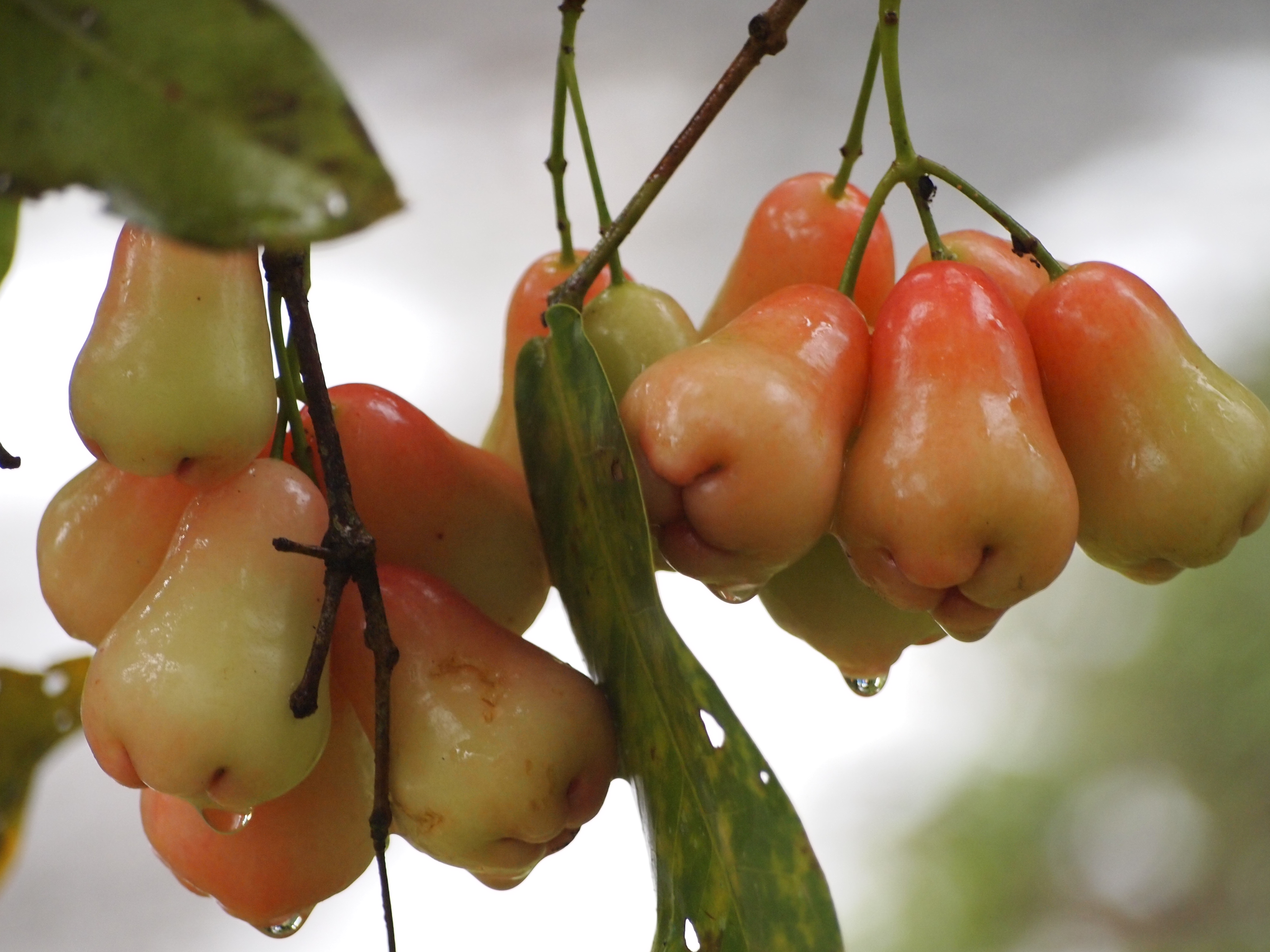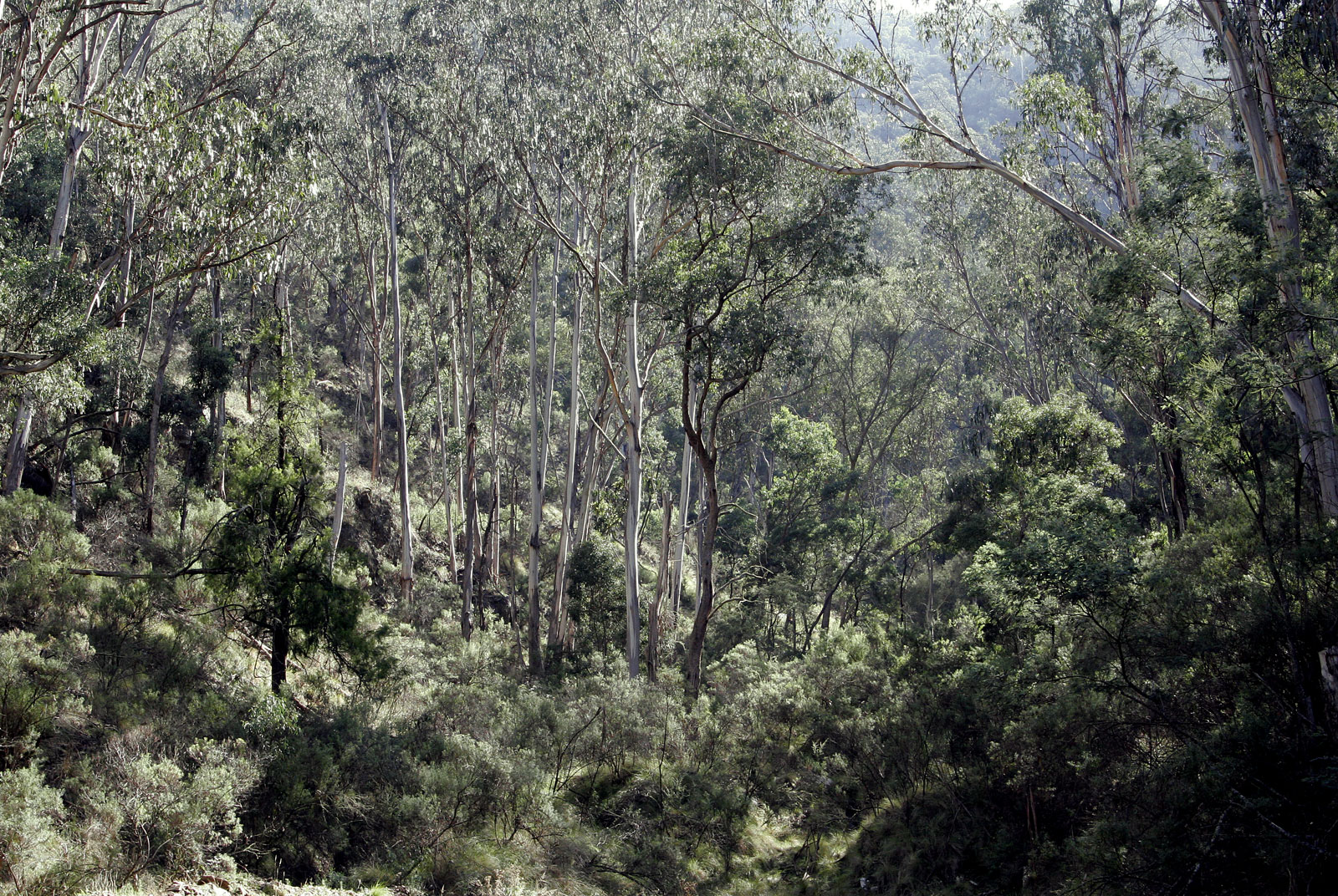|
Syzygium Aqueum
''Syzygium aqueum'' is a species of brush cherry tree. Its common names include watery rose apple, water apple and bell fruit, and ''jambu'' in Malay and several Indian languages. The tree is cultivated for its wood and edible fruit. The fruit is a fleshy, whitish-pinkish to yellowish-pinkish or red berry which is bell-shaped, waxy and crisp. ''Syzygium aqueum'' is native to tropical Asia and Queensland. The tree requires heavy rainfalls and can survive in tropical habitats, up to 1600m above sea level. rench, Bruce R. 1989. ''Food plants of Papua New Guinea : a compendium'' In the Philippines, it is locally known as ''tambis'' and is often confused with ''macopa'' (''Syzygium samarangense''). The wood is durable and suitable for making tools. The bark of the tree is sometimes used in herbal medicines. It is grown in orchards and gardens, and parks as an ornamental plant Ornamental plants or ''garden plants'' are plants that are primarily grown for their beauty but also ... [...More Info...] [...Related Items...] OR: [Wikipedia] [Google] [Baidu] |
Nicolaas Laurens Burman
Nicolaas Laurens Burman (27 December 1734 – 11 September 1793) was a Dutch botanist. He was the son of Johannes Burman (1707–1780). He succeeded his father to the chair of botany at the Athenaeum Illustre of Amsterdam., and at the Hortus Botanicus (Amsterdam), Hortus Botanicus. He continued the correspondence with Carl Linnaeus, joining him at the University of Uppsala in 1760. He is the author of numerous works including ''Specimen botanicum de geraniis'' (1759) and ''Flora Indica'' (1768) which was later completed by Johann Gerhard Koenig (1728–1785). Works * References * 1734 births 1793 deaths 18th-century Dutch botanists Scientists from Amsterdam Academic staff of the University of Amsterdam Age of Liberty people {{Netherlands-botanist-stub ... [...More Info...] [...Related Items...] OR: [Wikipedia] [Google] [Baidu] |
Arthur Hugh Garfit Alston
Arthur Hugh Garfit Alston (born in West Ashby on 4 September 1902; died in Barcelona on 17 March 1958) was an English botanist. Education and career His father was a vicar and amateur naturalist who first got him interested in the field. A.H.G. Alston later received his B.A. from the University of Oxford. He went on to work at the Royal Botanic Gardens, Kew and the colonial Department of Agriculture in Ceylon. He joined the Linnean Society of London in 1927. This botanist is denoted by the author abbreviation when citing a botanical name A botanical name is a formal scientific name conforming to the ''International Code of Nomenclature for algae, fungi, and plants'' (ICN) and, if it concerns a plant cultigen, the additional cultivar or cultivar group, Group epithets must conform t .... References 1902 births 1958 deaths Alumni of Lincoln College, Oxford Botanists with author abbreviations Fellows of the Linnean Society of London People from East Lindsey Dist ... [...More Info...] [...Related Items...] OR: [Wikipedia] [Google] [Baidu] |
Jambu Air
Jambu or jumbu may refer to: * Jambuswami (543-449 BCE), Jain monk * ''Jambu'', a Malay/Indonesian term for various fruits, including: ** ''jambu air'', Syzygium aqueum (Watery rose apple) ** ''jambu batu'', guava ** ''jambu bol'', Syzygium malaccense (Malay rose apple) ** ''jambu semarang'', Syzygium samarangense (wax apple) * Jambul or jambu tree, Syzygium cumini * ''Jambu'', a Brazilian term for the herb ''Acmella oleracea'' * Jambu fruit dove, a species of fruit dove (bird) * Jambu, an orca in the ''South Park'' episode "Free Willzyx" * ''Jambu'' (film), a 1980 Indian Tamil-language film, see list of Tamil films of 1980 * Jambu Lochan, purported founder of the Indian city of Jammu See also *Jammu (other) *Jamu (other) * Jambudvipa (other) ** Jambudvipa, the terrestrial world in the cosmologies of Indian religions, also an alternate name of India * Jambulingam (director), Indian film director, see '' Apna Desh'' or ''Miss Mary'' * Jambulingam Nad ... [...More Info...] [...Related Items...] OR: [Wikipedia] [Google] [Baidu] |
Malay Language
Malay ( , ; , Jawi alphabet, Jawi: ) is an Austronesian languages, Austronesian language spoken primarily by Malays (ethnic group), Malays in several islands of Maritime Southeast Asia and the Malay Peninsula on the mainland Asia. The language is an official language of Brunei, Malaysia, and Singapore. Indonesian language, Indonesian, a standardized variety of Malay, is the official language of Indonesia and one of the working languages of East Timor. Malay is also spoken as a regional language of Malays (ethnic group), ethnic Malays in Indonesia and the Thai Malays, southern part of Thailand. Altogether, it is spoken by 60 million people across Maritime Southeast Asia. The language is pluricentric and a ISO 639 macrolanguage, macrolanguage, i.e., a group of Mutual intelligibility, mutually intelligible speech varieties, or dialect continuum, that have no traditional name in common, and which may be considered distinct languages by their speakers. Several varieties of it ar ... [...More Info...] [...Related Items...] OR: [Wikipedia] [Google] [Baidu] |
Syzygium Samarangense
''Syzygium'' () is a genus of flowering plants that belongs to the myrtle family, Myrtaceae. The genus comprises about 1200 species, and has a native range that extends from Africa and Madagascar through southern Asia east through the Pacific. Its highest levels of diversity occur from Malaysia to northeastern Australia, where many species are very poorly known and many more have not been described taxonomically. One indication of this diversity is in leaf size, ranging from as little as a half inch (one cm) to as great as 4 ft 11 inches (1.5 meters) by sixteen inches (38 centimeters) in ''Syzygium acre'' of New Caledonia. Most species are evergreen trees and shrubs. Several species are grown as ornamental plants for their attractive glossy foliage, and a few produce edible fruits called roseapples that are eaten fresh or used in jams and jellies. The most economically important species, however, is the clove ''Syzygium aromaticum'', of which the unopened flower buds are an ... [...More Info...] [...Related Items...] OR: [Wikipedia] [Google] [Baidu] |
Herbalism
Herbal medicine (also called herbalism, phytomedicine or phytotherapy) is the study of pharmacognosy and the use of medicinal plants, which are a basis of traditional medicine. Scientific evidence for the effectiveness of many herbal treatments remains limited, prompting ongoing regulatory evaluation and research into their safety and efficacy. Standards for purity or dosage are generally not provided. The scope of herbal medicine sometimes includes fungi, fungal and bee products, as well as Dietary mineral, minerals, Exoskeleton, shells and certain animal parts. Paraherbalism is the Pseudoscience, pseudoscientific use of plant or animal extracts as medicine, relying on unproven beliefs about the safety and effectiveness of minimally processed natural substances. Herbal medicine has been used since at least the Paleolithic era, with written records from ancient Sumer, Egypt, Greece, China, and India documenting its development and application over millennia. Modern herbal medici ... [...More Info...] [...Related Items...] OR: [Wikipedia] [Google] [Baidu] |
Ornamental Plant
Ornamental plants or ''garden plants'' are plants that are primarily grown for their beauty but also for qualities such as scent or how they shape physical space. Many flowering plants and garden varieties tend to be specially bred cultivars that improve on the original species in qualities such as color, shape, scent, and long-lasting blooms. There are many examples of fine ornamental plants that can provide height, privacy, and beauty for any garden. These ornamental perennial plants have seeds that allow them to reproduce. One of the beauties of ornamental grasses is that they are very versatile and low maintenance. Almost all types of plant have ornamental varieties: trees, shrubs, climbers, grasses, succulents, aquatic plants, herbaceous perennials and annual plants. Non-botanical classifications include houseplants, bedding plants, hedges, plants for cut flowers and ''foliage plants''. The cultivation of ornamental plants comes under floriculture and tree nurseries ... [...More Info...] [...Related Items...] OR: [Wikipedia] [Google] [Baidu] |
Syzygium
''Syzygium'' () is a genus of flowering plants that belongs to the myrtle family, Myrtaceae. The genus comprises about 1200 species, and has a native range that extends from Africa and Madagascar through southern Asia east through the Pacific. Its highest levels of diversity occur from Malaysia to northeastern Australia, where many species are very poorly known and many more have not been described taxonomically. One indication of this diversity is in leaf size, ranging from as little as a half inch (one cm) to as great as 4 ft 11 inches (1.5 meters) by sixteen inches (38 centimeters) in '' Syzygium acre'' of New Caledonia. Most species are evergreen trees and shrubs. Several species are grown as ornamental plants for their attractive glossy foliage, and a few produce edible fruits called roseapples that are eaten fresh or used in jams and jellies. The most economically important species, however, is the clove ''Syzygium aromaticum'', of which the unopened flower buds are an ... [...More Info...] [...Related Items...] OR: [Wikipedia] [Google] [Baidu] |
Trees Of Malesia
In botany, a tree is a perennial plant with an elongated stem, or trunk, usually supporting branches and leaves. In some usages, the definition of a tree may be narrower, e.g., including only woody plants with secondary growth, only plants that are usable as lumber, or only plants above a specified height. But wider definitions include taller palms, tree ferns, bananas, and bamboos. Trees are not a monophyletic taxonomic group but consist of a wide variety of plant species that have independently evolved a trunk and branches as a way to tower above other plants to compete for sunlight. The majority of tree species are angiosperms or hardwoods; of the rest, many are gymnosperms or softwoods. Trees tend to be long-lived, some trees reaching several thousand years old. Trees evolved around 400 million years ago, and it is estimated that there are around three trillion mature trees in the world currently. A tree typically has many secondary branches supported clear of ... [...More Info...] [...Related Items...] OR: [Wikipedia] [Google] [Baidu] |
Trees Of Australia
The flora of Australia comprises a vast assemblage of plant species estimated to over 21,000 vascular and 14,000 non-vascular plants, 250,000 species of fungi and over 3,000 lichens. The flora has strong affinities with the flora of Gondwana, and below the family level has a highly endemic angiosperm flora whose diversity was shaped by the effects of continental drift and climate change since the Cretaceous. Prominent features of the Australian flora are adaptations to aridity and fire which include scleromorphy and serotiny. These adaptations are common in species from the large and well-known families Proteaceae (''Banksia''), Myrtaceae (''Eucalyptus'' - gum trees), and Fabaceae (''Acacia'' - wattle). The arrival of humans around 50,000 years ago and the settlement by Europeans from 1788, has had a significant impact on the flora. The use of fire-stick farming by Aboriginal people led to significant changes in the distribution of plant species over time, and the large-scal ... [...More Info...] [...Related Items...] OR: [Wikipedia] [Google] [Baidu] |
Flora Of Queensland
Flora (: floras or florae) is all the plant life present in a particular region or time, generally the naturally occurring ( indigenous) native plants. The corresponding term for animals is ''fauna'', and for fungi, it is '' funga''. Sometimes bacteria and fungi are also referred to as flora as in the terms '' gut flora'' or '' skin flora'' for purposes of specificity. Etymology The word "flora" comes from the Latin name of Flora, the goddess of plants, flowers, and fertility in Roman mythology. The technical term "flora" is then derived from a metonymy of this goddess at the end of the sixteenth century. It was first used in poetry to denote the natural vegetation of an area, but soon also assumed the meaning of a work cataloguing such vegetation. Moreover, "Flora" was used to refer to the flowers of an artificial garden in the seventeenth century. The distinction between vegetation (the general appearance of a community) and flora (the taxonomic composition of a community) ... [...More Info...] [...Related Items...] OR: [Wikipedia] [Google] [Baidu] |








